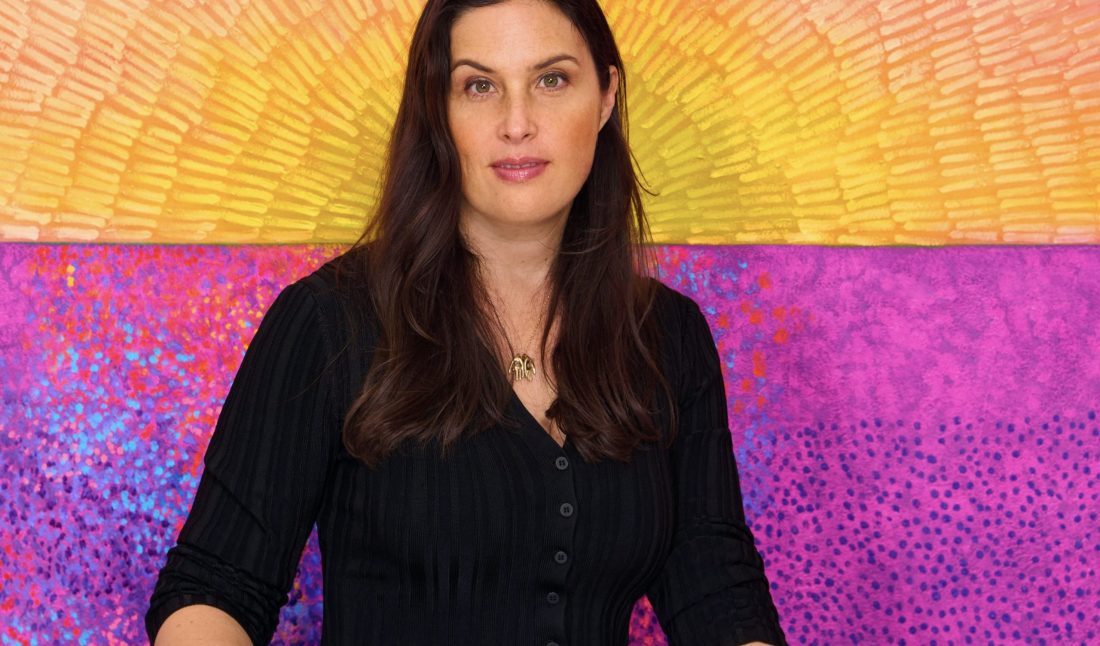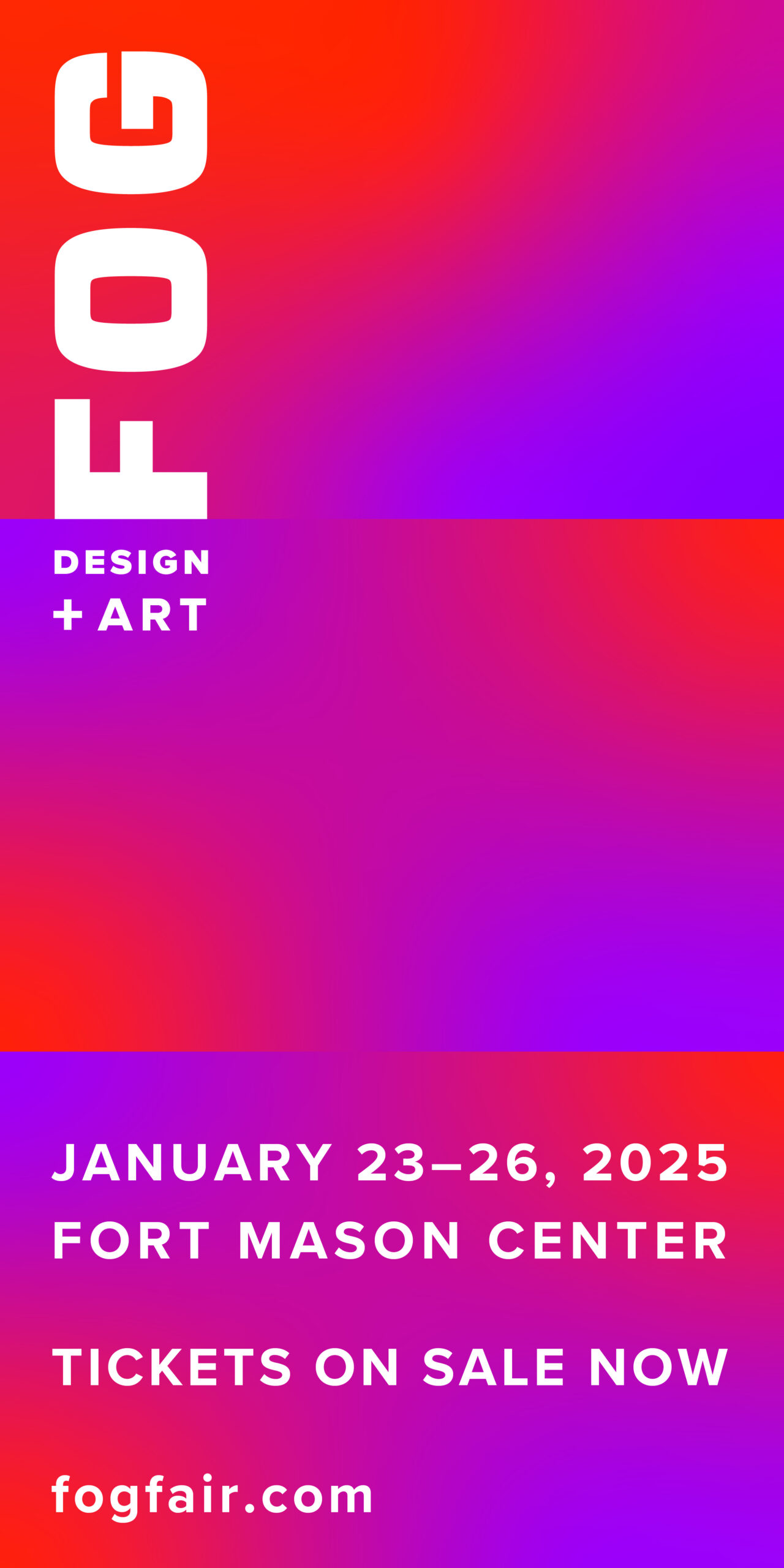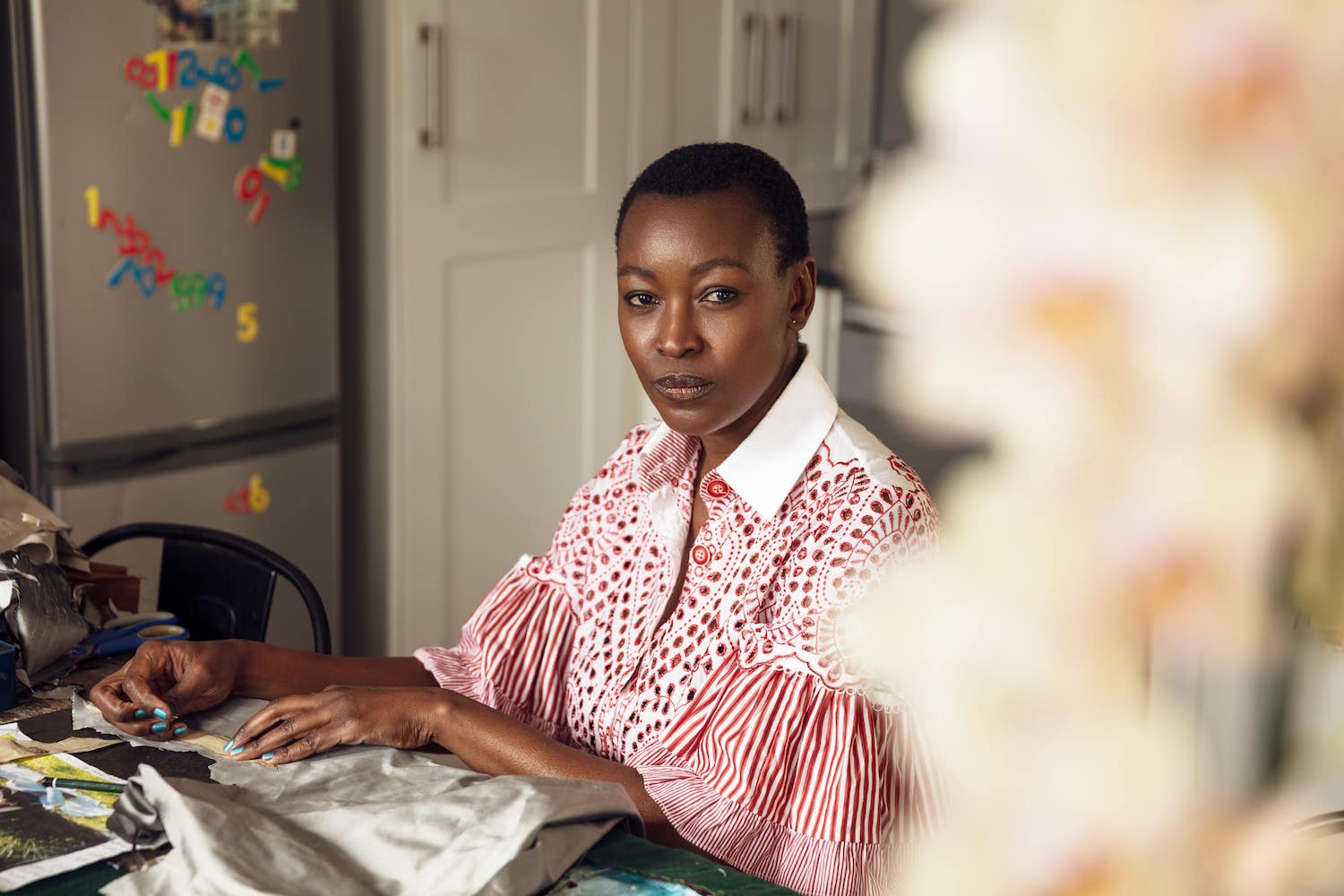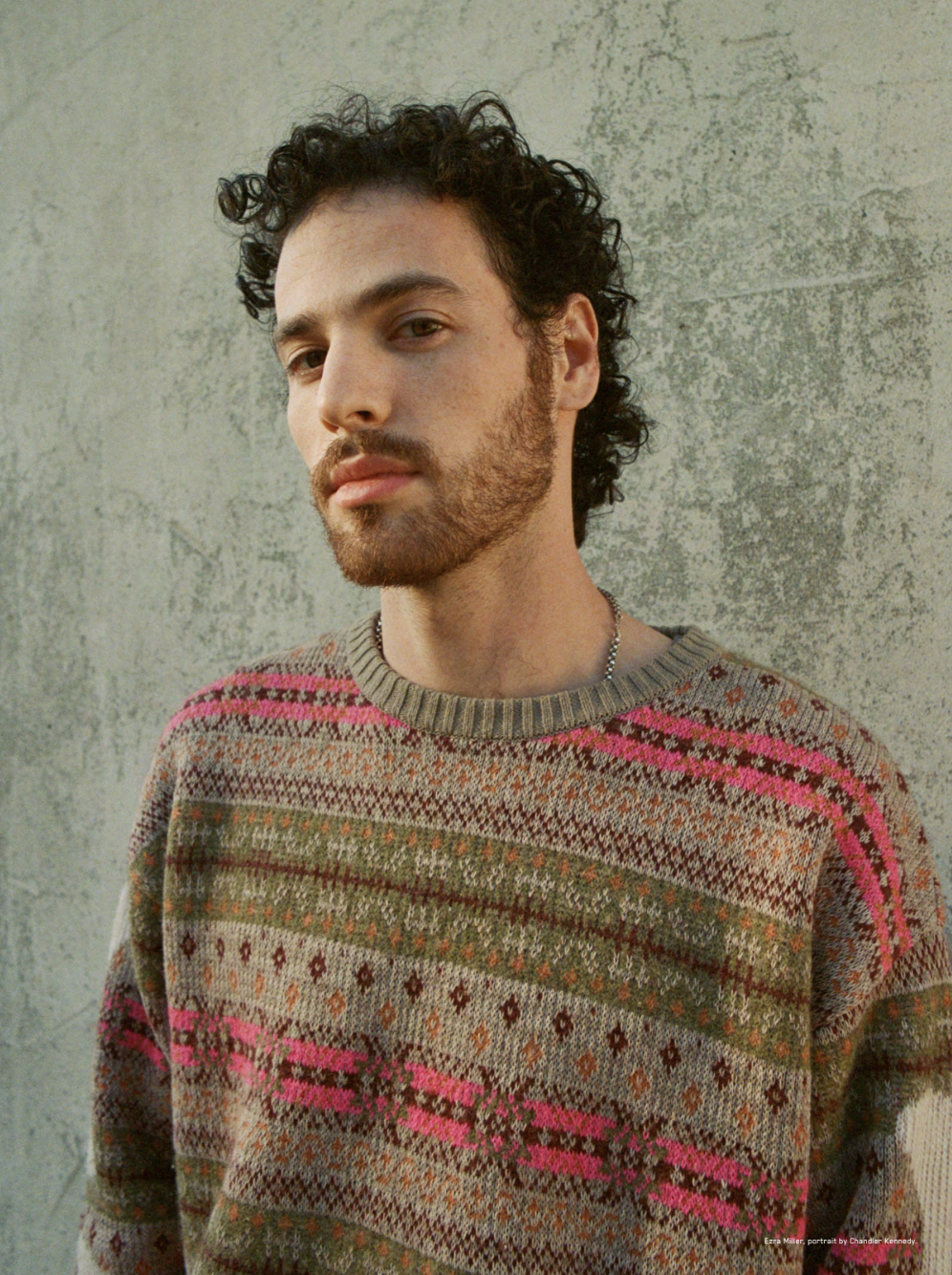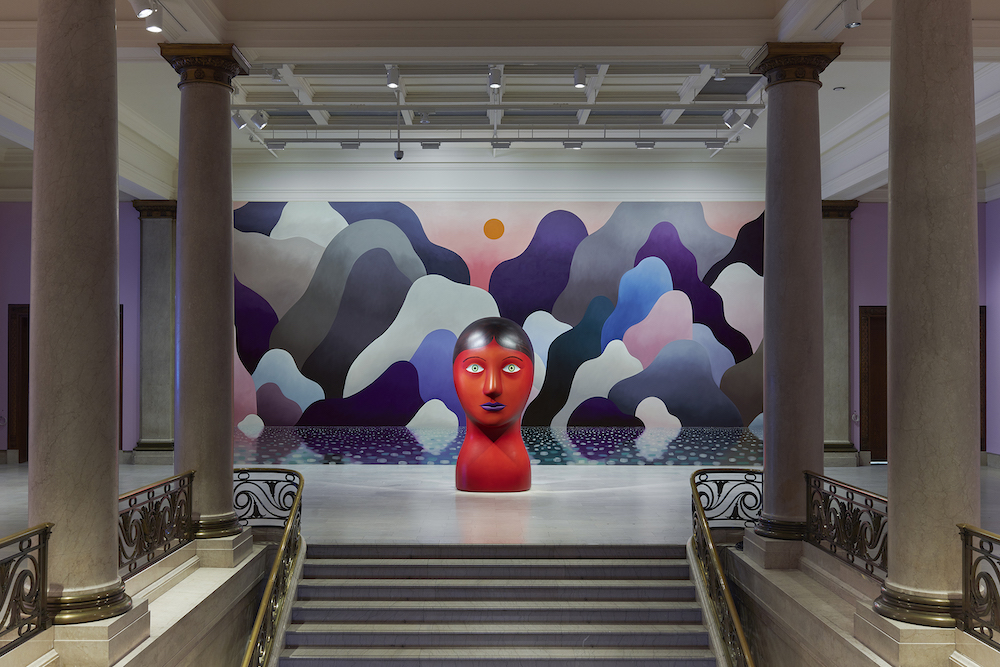Georgia O’Keeffe, who lived to nearly a hundred and spent a majority of those years teaching and making art in remote locations throughout the southwestern United States, once remarked that painting was “the thread that runs through all the reasons for all the other things that make one’s life.” This same logical thread seems to run through the life and work of the artist Jennifer Guidi. Since the early 2000s, Guidi has lived and worked in Los Angeles, where she has designed a home and created a studio practice that communes with the natural landscape surrounding vast tracts of interstates and urban sprawl.
Born in 1972 in Redondo Beach, Guidi spent a good part of her childhood and adolescence out of doors in Southern California with her mindset on becoming an artist. During high school, she relocated with her family to the East Coast. Shortly afterward, she enrolled at Boston University, receiving her BFA, and eventually, the School of the Art Institute of Chicago, where she earned her MFA.
With two art degrees under her belt, Guidi decided to do a U-turn and return to Southern California—to find a creative foothold for herself amid the uneven terrain of the contemporary art world. SoCal was familiar territory with a notable history of 20th-century art and design embedded in the landscape. This was the early 2000s, and, logistically speaking, Los Angeles still had relatively cheap apartments and large studio spaces to offer artists. It was also a softer climate to fall back on while staring down the long barrel of uncertainty as a working artist.
Over the years, Guidi experimented with different painting techniques and styles, often informed by details that she picked up from the natural and built environments that surrounded her. A self-described late bloomer in terms of art world success, Guidi noticed that the public became interested in her work only after she had connected with it entirely on her own terms. Her paintings—magnetic fields of pulsating color whose rhythmic patterns mirror the physical laws of the expanding universe—continue to capture the attention of art enthusiasts. Applying a base layer of sand, which she mixes with various pigments and oil and acrylic paints, Guidi uses a dowel to make equidistant indentations that radiate out from left of center, as if mirroring the physical location of the heart in the body of the viewer.
Perhaps what draws people to her paintings in the midst of global convulsions is her painterly sense of a natural order that informs all cycles of change. I had a chance to talk with Guidi over the phone as we approached a new calendar year. Initially, there was a bit of hesitation, as we were gauging whether or not it would be necessary to uphold a certain art world formality amid these intensely introspective and vigorously depleting times. How to openly dialogue with anybody inside of a pandemic? “How are you?” is a different kind of conversational probe. To ask after somebody these days is to risk inquiring after the hurtling effects of systems that have failed us.
In taking stock of what she has shed along the way to living in greater alignment with her creative vision, a way forward has emerged for Guidi that is built entirely on a simpler connection with the here and now. In her own words, “It’s really this lifelong journey.”
WHITEWALL: What are you working on these days?
JENNIFER GUIDI: I have a museum show at the Long Museum in Shanghai in April. It’s a very large space, so there will be a mixture of new works and borrowed works. I’ll be preparing for that show up until when it ships in March.
WW: You are a meditator. When did you start, and what has meditation taught you about your own creative practice?
JG: I’ve been meditating for about five years now, or a little longer. I have a morning ritual to get ready for the day. I light a candle. I light my incense. I have an area where I meditate and pull these yoga cards. I’ll pick one and read it and think about how it relates to the day, or to what I’m working on. I’ll do some yoga poses and some breathwork. I feel like this morning ritual really grounds me, but also with meditation, there is a calmness and a mind-opening that happens over time. I definitely feel like all of those things have contributed to my life, but also to my art practice. Sometimes I’m thinking about a certain idea for a painting or wondering where I should go with a new piece, and ideas come during that stillness of sitting in meditation. And I do believe that the answers are all there. I guess that has been a journey for me in meditation and in art.
WW: There are times when we have to do major, structural overhauls to begin to live in greater alignment. Then there’s the everyday practice of clearing the channel, clearing one’s head.
JG: Yeah, definitely.
WW: You knew that you wanted to be an artist from quite a young age. How did that awareness come about? Do parts of your life today align with any aspect of your childhood vision for it?
JG: From a very early age, I was always into drawing, painting, and making things, to craft in general—putting things together, sewing, just working with my hands. I knew that’s what I wanted to do. In high school, I was already working on a portfolio. In college, I didn’t know how I was going to be able to survive as an artist, but that’s still what I wanted to do. I have always felt that the goal, in terms of making art, is to be able to do it for as long as possible—for as old as I hopefully get. I’ve always liked to see older artists. It’s not something that you ever have to retire from. It’s really this lifelong journey. That has always stuck with me. I remember when an undergraduate professor asked the class, “Who thinks they’ll be doing this forever,” and I raised my hand and all of my friends were like, “You have no idea. How can you say that?” I could just feel it. That’s what I wanted. There’s always been this inner driving force to pursue it. It’s been there all along for me.
I didn’t really feel like I figured out my own work until about 40. There were lots of life starts and stops and points where I was like, “Oh, it’s never going to work out. You’re never going to show. You’re never going to have a career.” Once I thought, “Well, if it doesn’t happen, it doesn’t happen.” But I make this work for myself. Number one. To keep pushing through. Once I really connected with the work on my own terms, that’s when I felt that people really started to read what I was putting into it. Then I started to feel like, “Oh, this is working. People are actually reading what I see and what I feel in the work.”
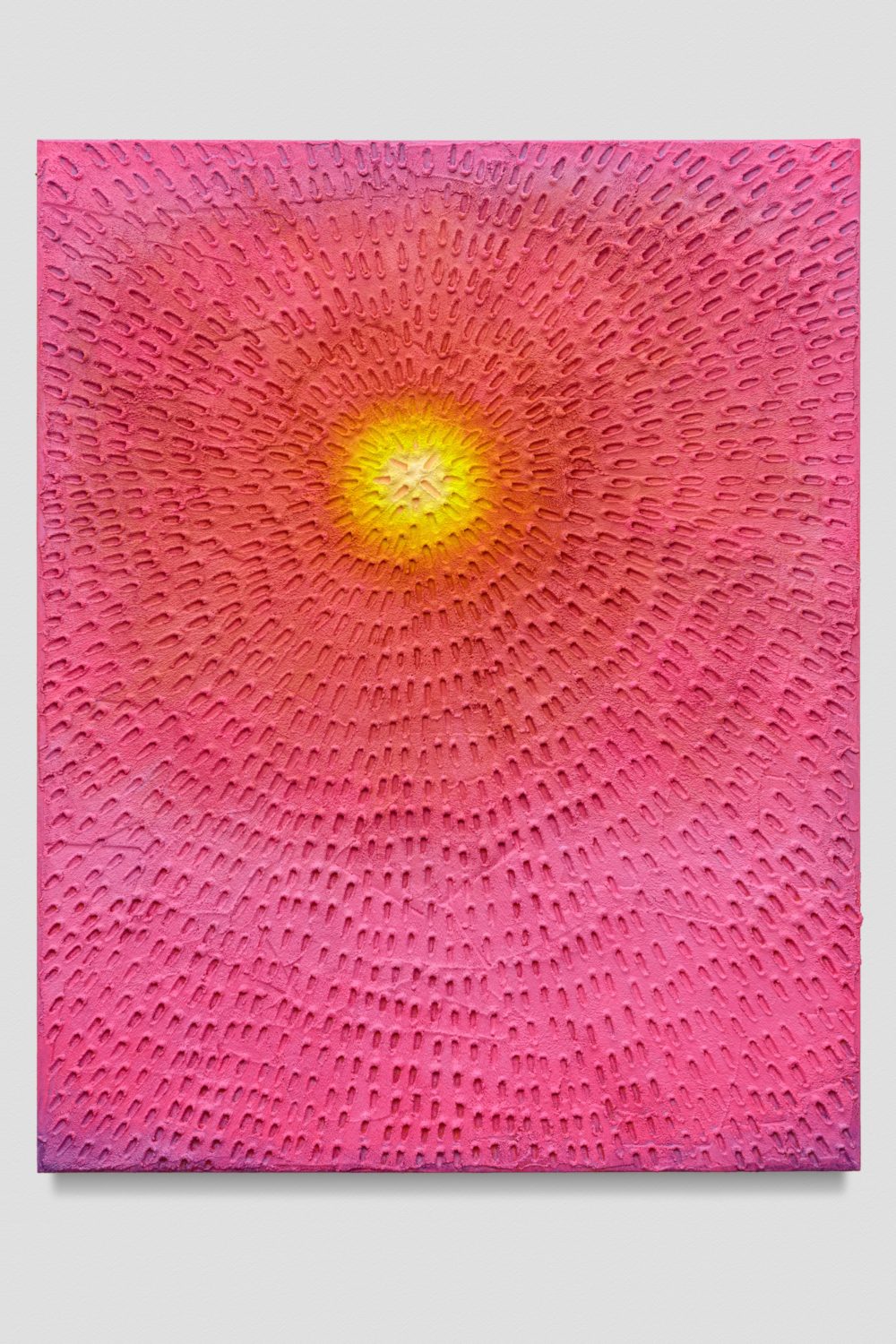 Jennifer Guidi, “Sun Gazing (Painted White Sand SF #1H, Purple-Pink-Orange-Yellow Gradient, Natural
Ground),” 2021,
Sand, acrylic and oil on linen, 60 x 48 inches; photo by Joshua White, courtesy of the artist and Gagosian.
Jennifer Guidi, “Sun Gazing (Painted White Sand SF #1H, Purple-Pink-Orange-Yellow Gradient, Natural
Ground),” 2021,
Sand, acrylic and oil on linen, 60 x 48 inches; photo by Joshua White, courtesy of the artist and Gagosian.
WW: If we return to that idea of the answers being there—it seems like there’s a design to life.
JG: I totally believe that.
WW: You went to art school in Boston and Chicago, and those are cold cities. What did those environments give to you, or was it just about checking the art school box?
JG: [Laughs] I moved to Massachusetts right before my junior year of high school. Staying in Boston for college just made sense. I did BU’s program for art. I liked how traditional it was. I was really into painting and drawing from the figure. But being on the East Coast was also about being close to family. I do feel that living in an environment where it gets cold and you have those changes of weather definitely shaped me in a different way than if I had just stayed in California—you know, spent my whole life in Southern California. I feel like with cold weather you just learn how to survive in a different way. It shapes one’s character, I think in a good way.
I still miss that change of season and that feeling that comes along with it. If you are in your studio and it’s super cold out, it just keeps you in there. There’s no reason to leave; you sort of hunker down in a different way. But then, ultimately, I do feel like, I was born in California, my childhood was here, and coming back has really shaped my art in a different way—with the landscape, with the light, and with the warmth. Ultimately, I would rather be warm than cold.
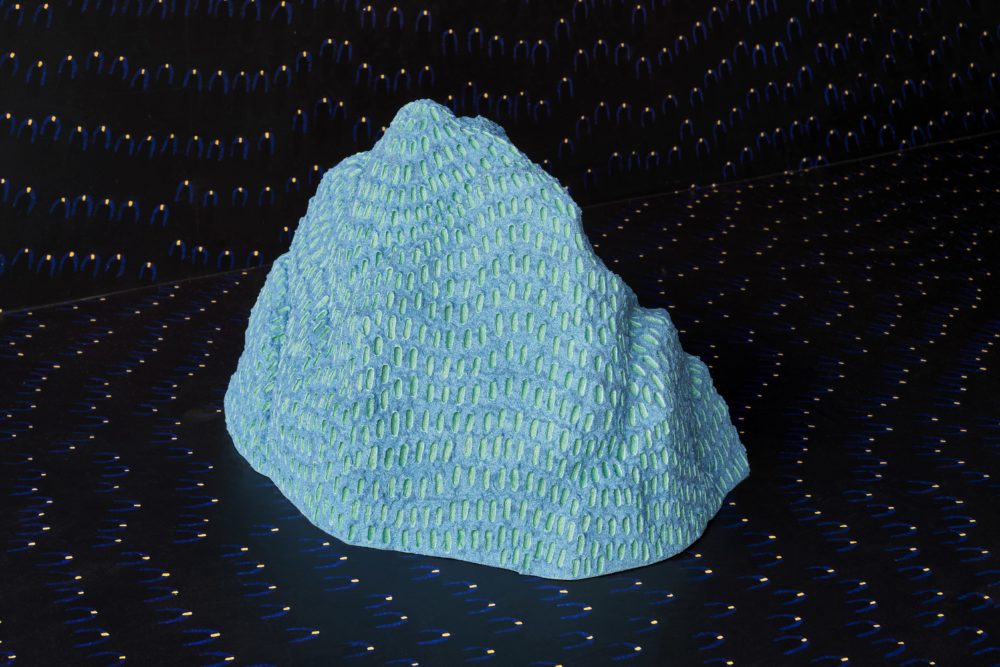 Jennifer Guidi, “Mass Energy,” 2021, bronze, sand, and oil, 19 x 32 x 22 inches; photo by Thomas Lannes, courtesy of the artist and Gagosian.
Jennifer Guidi, “Mass Energy,” 2021, bronze, sand, and oil, 19 x 32 x 22 inches; photo by Thomas Lannes, courtesy of the artist and Gagosian.
WW: Did you find yourself spending time with other artists during graduate school, or was it more of a loner experimental phase?
JG: It was a little bit of both, but more of a loner phase in graduate school. There were lots of people who were busy networking. I was in a very antisocial, stay-in-my-studio mode during grad school.
WW: What do you think motivated you to return to California?
JG: I kept thinking about L.A. I was researching what was here, what was going on in terms of the art world. For me, it was kind of simple. I felt like L.A. was home. As an artist, it is either New York or L.A. And I couldn’t afford New York at the time. L.A. was a place I could go and find a much cheaper apartment and work in my apartment, paint in my apartment, have a job, and also be able to pay my bills. And New York felt—I just didn’t know how I would do that. It just felt too difficult. Although I love the energy of New York. A part of me wishes that I had done that at some point. I moved back to L.A. twenty years ago, because there was more space and rents were way cheaper back then. There also weren’t as many social obligations. It was just easier to concentrate on the work.
WW: It’s incredible how much the art world has changed in L.A. There’s a different landscape of connectivity nowadays, an infrastructure that wasn’t there twenty years ago.
JG: That’s true. People always knew that good art was being made here. And that it was a place that artists liked to be. But we were still working in the shadow of New York. Once galleries started moving here, things began to change. I think people began to feel like they could have recognition here, and that it was okay to come here. It’s kind of crazy how many people have ended up moving here. I’m sure it’s not so easy anymore. Rents are high. It is much harder to find studio spaces.
WW: The moves that one generation makes seem to influence the next. It’s always that back and forth.
JG: That’s true.
WW: Do you feel like you got to a certain crossroads in your own creative process where you felt like you could no longer doubt the direction that you were headed?
JG: It was a gradual path, but there were those moments where I just had to have confidence in what I was doing and to just keep moving forward. To not doubt. I think all of us as humans and as artists have these doubts. I’ve had lots of friends who were trying to figure out what they were meant to be doing, and they’d find something and end up loving it, and other people would end up loving it, and then they would start worrying, “Oh my god, am I going to be stuck making this for the rest of my life?” Artists have those fears, and I think those fears can hold people back.
When I watch artists now on Instagram, you can see things unfold in such a way that you could never see before. I love to see artists connect to something. When you do make that connection, you just have to keep going. You can’t doubt yourself. Once you get past that point, you are really on a journey with the work, and the excitement starts to come from the small changes, from really diving in and examining things. When we look at artists in art history who have spent their whole lives dedicated to one body of work, you see how rich it can become over time. They don’t have to overhaul what they’re doing. They are content with the little shifts. Small experiments.
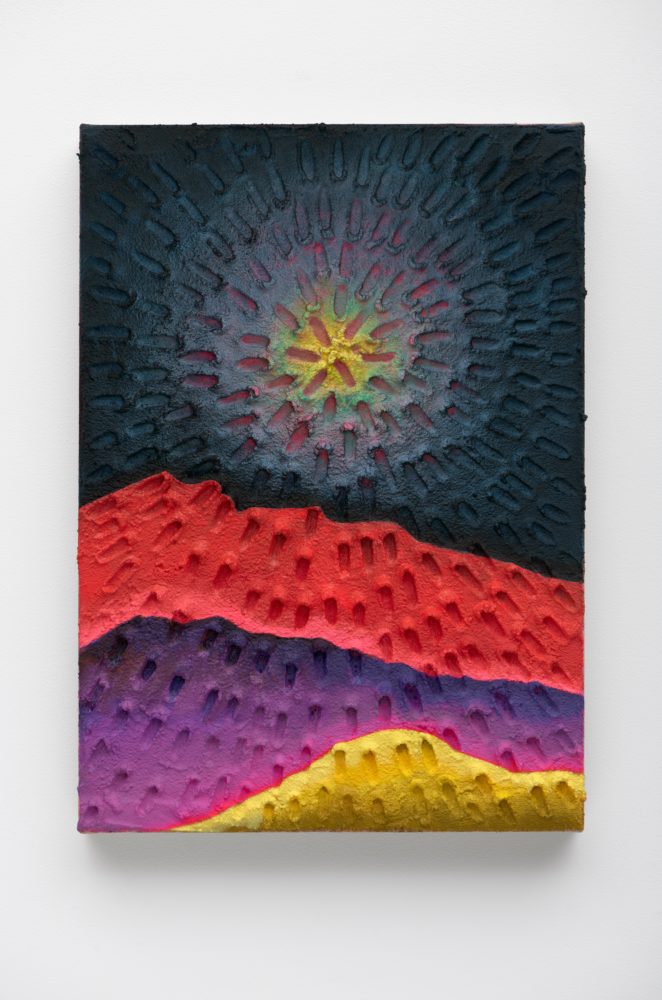 Jennifer Guidi, “Moonlight and Love,” 2021, Sand, acrylic and oil on linen, 21 x 15 inches; photo by Brica Wilcox, courtesy of the artist and Gagosian.
Jennifer Guidi, “Moonlight and Love,” 2021, Sand, acrylic and oil on linen, 21 x 15 inches; photo by Brica Wilcox, courtesy of the artist and Gagosian.
WW: It can be hard to align yourself with change. Even on a small scale, it can be scary.
JG: That’s true [laughs], and maybe the goal is to not be scared, but to push up against that fear, which is not just the case with painting, but with life in general. We are always pushing up against things to be who we want to be, or to see more.
WW: You have done some work with color theory. Do you enjoy reading color theory? Do the words capture something that you have come to understand through the process of painting?
JG: I’m interested in color theory, but for me, color is more of an intuitive process. I feel like the more that I connect to color, the more that my understanding of it grows. I have always been attracted to color. I’ve always been good in terms of mixing and seeing and matching colors. I have this whole book of Josef Albers prints that he did based on color theory—his whole life was spent practicing these ideas of color theory. To me, that’s amazing. They’re beautiful paintings, and I like to look at things like that—and to use them as a starting point, as visual references, and then I venture off on my own and do my own thing.
Color excites me. I just finished this background of a painting that I am working on where I have mixed all of these different colored dots together. Every step of it, I was excited by the way a new color would interact with the ones that were already there. And how one section looks completely different from all of the others. Whenever I finish a painting, there’s always a moment where I sit in front of it to experience all of the colors vibrating against each other. I end up seeing a totally different color because of how they are mixed together, and that excites me.
I feel—and I’ve said this for a very long time—I’m grateful that my job is with color. I feel very lucky that I get to think about color. I know how people react to color. I had somebody in the studio recently, and he said, “I don’t normally like to put feelings onto paintings, but I feel really happy in front of this.” I like that. I like that color is evoking emotion. For me, it’s about that.
WW: It’s also vibrational and energetic.
JG: Yes. I try to create a certain vibration. I think of them as these kinds of energy fields. It’s trying to contain, and also trying to project energy out into the world.
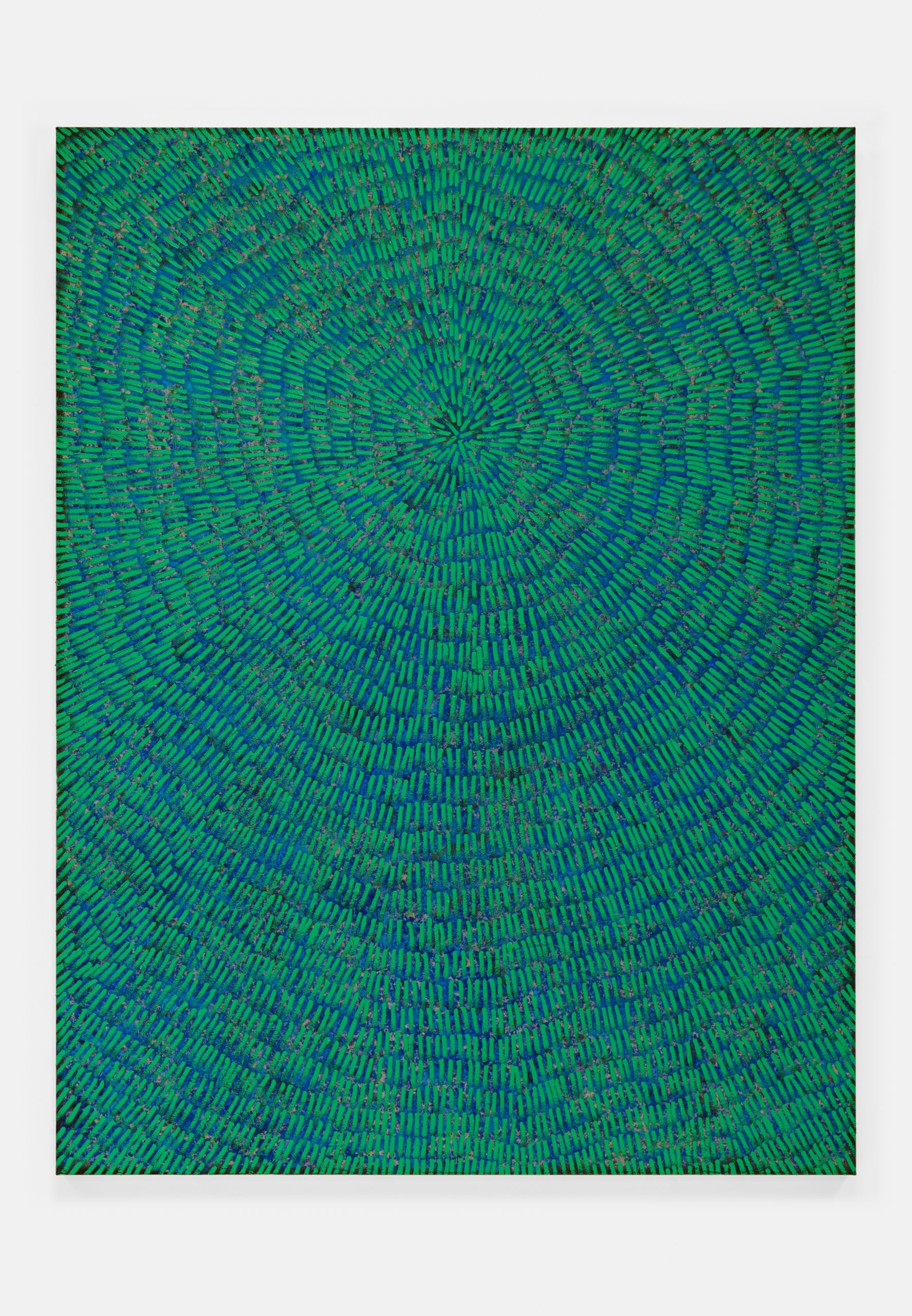 Jennifer Guidi, “Our Voices Vibrate Across the Turquoise Sky (Painted Universe Mandala, SF #8E Turquoise – Natural Sand, Blue, Black, Green Ground),” 2021, sand, acrylic, and oil on linen, 76 x 58 inches; photo by Brica Wilcox, courtesy of the artist and Gagosian.
Jennifer Guidi, “Our Voices Vibrate Across the Turquoise Sky (Painted Universe Mandala, SF #8E Turquoise – Natural Sand, Blue, Black, Green Ground),” 2021, sand, acrylic, and oil on linen, 76 x 58 inches; photo by Brica Wilcox, courtesy of the artist and Gagosian.
WW: I saw that you went to Georgia O’Keeffe’s house. What was that experience like?
JG: It was amazing. I have always been a fan, since I was a kid, so to actually be able to go. They have it pretty much set up in the way that she last lived there. It was so beautiful. The day that I visited, it was very sunny—a very crisp, blue sky—and you could really see how she was painting exactly what she saw, what was in front of her every day. The landscape and the adobe building and the shapes and the colors. She was just absorbing what was right in front of her. Her house in Abiquiu—she tried to get that property for ten years. They wouldn’t sell it to her, and she just kept trying and trying and trying.
I like the idea that she didn’t give up. She knew it was such a special place, and she knew that she needed to be there. Just the simplicity of it, you know. I had seen pictures of the inside before, those older photographs where her paintings were also in her living room. I also connect with creating my own interior space, my living space. You can tell that she was into modern design, furniture, other artists. She collected work. She was such a force. Seeing her space, and being in it—being in her studio and seeing that landscape—was amazing.
WW: The question becomes how to shape or design space, or how to inhabit our lives in ways that bring us into greater alignment.
JG: Ultimately, it is about creating that awareness. It’s about looking. Training your eye to really see and to take things in. And how that ends up transforming us.
WW: I feel like a lot of people have been experiencing time slips inside of the pandemic—either moving backward or forward in time. What is guiding you into the future right now? What are you holding onto? Or letting go of?
JG: Our awareness of time is super off. Even when I write or say the year, I’m like, “You’re wrong.” It’s like we don’t trust time. For me, moving forward is really, I think, mostly about meditation. I am trying to go deeper into that. I just finished the Autobiography of the Yogi. Paramahansa Yogananda started the Self-Realization Fellowship in L.A. in the twenties. Right now, I am thinking a lot about that book. He says that one of his gurus came back to visit him. He had a vision, and he talks about the afterlife of the astral world. It’s interesting to think about what will be next. It’s hard not to think about.
As I get older, and people that I know pass away and I hear about other people who are passing away, it’s hard not to think about our own mortality. It’s just wanting to be as open as I can and to create bigger awareness, to connect to the people in my life, and to be connected to my work. And to try to forget about the rest of it—the stuff that doesn’t matter.
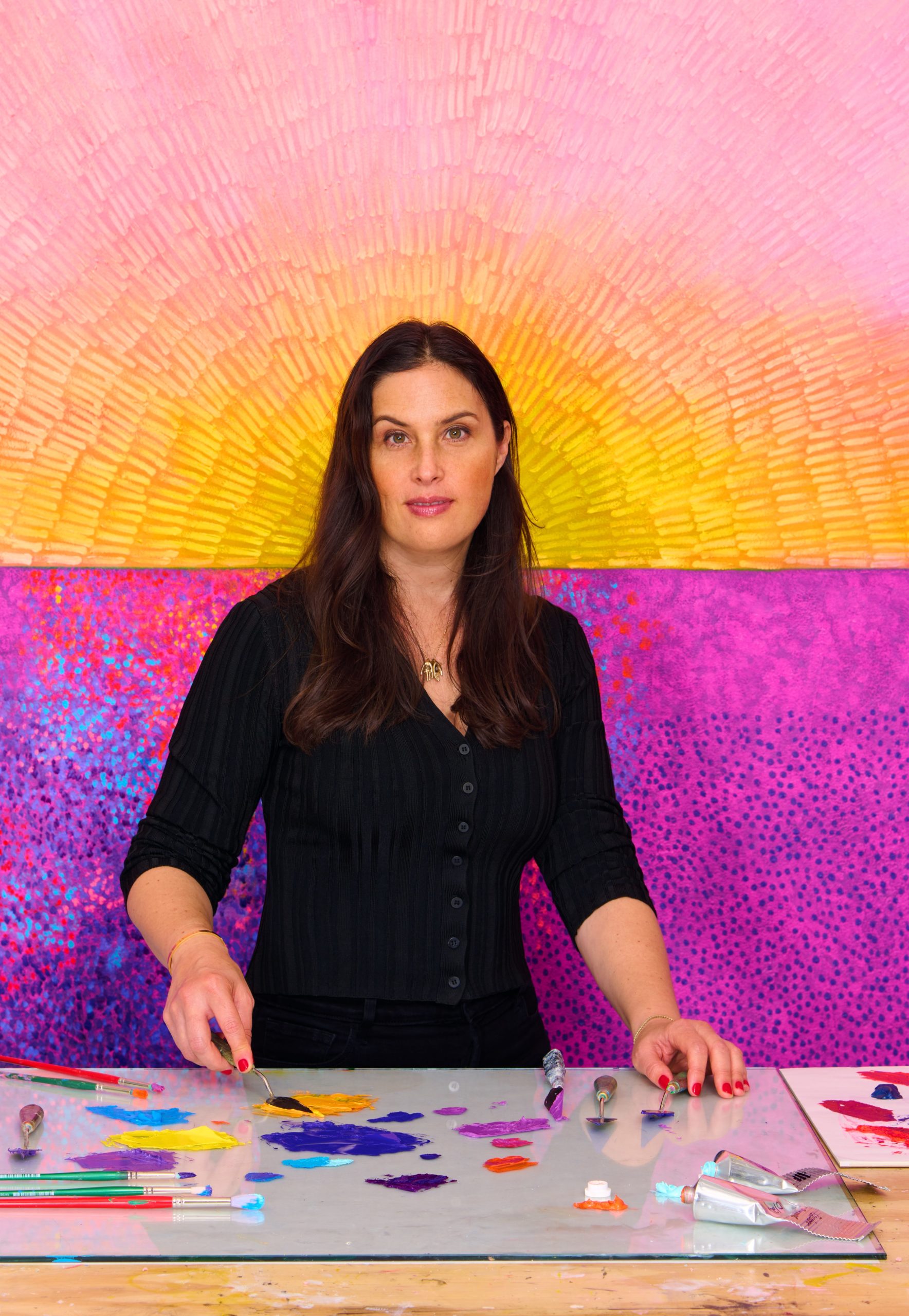 Portrait of Jennifer Guidi by Brica Wilcox, courtesy of the artist and Gagosian.
Portrait of Jennifer Guidi by Brica Wilcox, courtesy of the artist and Gagosian.






